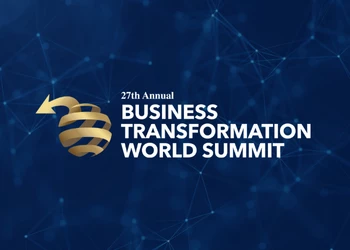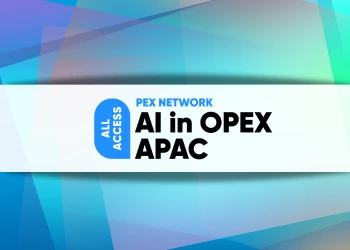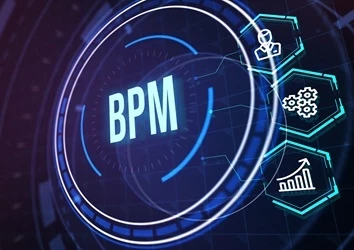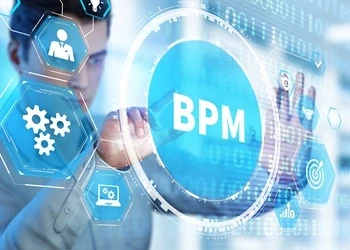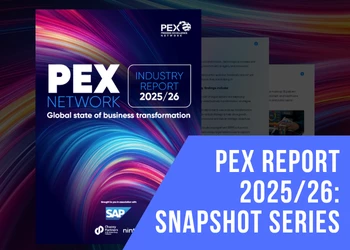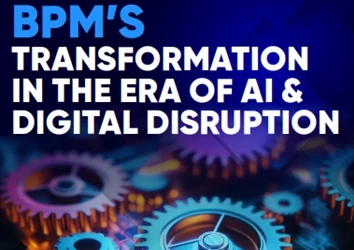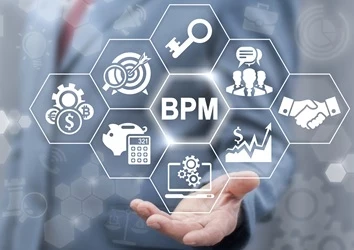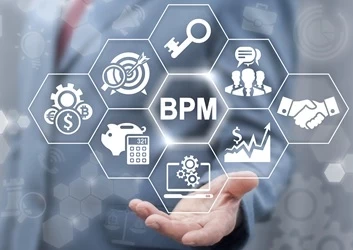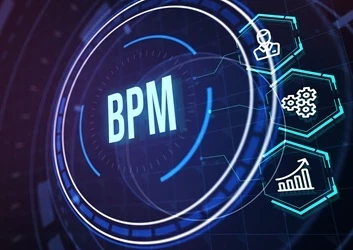Are you trying to improve the horse and cart? Interview with GE Healthcare's Seth Marrs
Add bookmark
|
One of the big challenges facing business today is the arrival of disruptive technologies that are causing widespread changes to working practices and business models. The internet, for instance, has enabled all sorts of new business models to thrive - think iTunes or EBay. And the pace of this technological disruptions is happening more and more frequently. Does this mean that continuous improvement with its focus on incremental improvement is becoming irrelevant given that the rules of the game are constantly being completely rewritten? What impact does that have on how we do process and continuous improvement? In this interview, (a transcript of a Process Perspectives podcast), Seth Marrs, GM of Sales Enablement at GE Healthcare, discusses the impact of technology and why process professionals have to distinguish between when it is best to continually improve and when it is time to go back to the drawing board and use technology to radically transform what you're doing.. |
Looking for a faster horse? |
Please note: this transcript has been edited for readability.
PEX Network: Is it becoming more important today for process professionals to know when you need to improve something and when you really need to reinvent it altogether?
Seth Marrs: Absolutely! Not only are you seeing businesses technology cause reinvention but you are also seeing the patience of businesses to let incremental improvement happen dissipate somewhat.
When you are taking a process flow, for instance, you need to look at the current state, this is how it works and that is still as valid as ever. Understanding how your business works and how the process flows is absolutely essential. Then, the standard method is to go to a future state and you build what the future state looks like and what you can deliver.
The one thing that I do differently here, is to add a period when I go into these processes and look at a best in class state. I force myself to look at the technology in the industry and what is it that I could do that could be completely different and outside the norm.
In the past you would bring experts together and you would look at what your process is and what it could be - almost entirely from a pure process standpoint. Now you have to bring technology in and look at it as a reinvention state and ask yourself: "what could I do to disrupt it?"
By adding in this third step it gives you the option and visibility to ensure that the process work you are doing is actually creating the best process using the best technology.
PEX Network: That’s interesting. It almost sounds like you’re talking about process "disruption"?
Seth Marrs: It is absolutely process disruption. What you used to do yesterday, you can’t do today. You are going to have to be able to do better.
It is like looking at the horse and buggy versus the car. You are both going to the same place but the way you get there is different. If I am going to try to process improve how I get my horse and buggy to one spot it is going to be very different how I try to process improve how I get my car to that spot.
PEX Network: In theory it makes a lot of sense that you would constantly need to be thinking about how we do things dramatically differently. But in practice it would seem to be a little bit harder to actually identify those things that need to change. How do you decide what should actually be improved versus scrapped or reinvented altogether?
Seth Marrs: The one big piece here is that the process cycles are shortening. You have to do your best to stay up to date with the technology that is going on around you and you also need to get your process improvement cycles slimmed down so you can implement them very quickly.
If you do a six month process improvement cycle with some of the technology that is coming out today, for instance, you could have a disruptor [i.e. new technology] come out within that six months. So you have to make sure your process cycles are faster; you have to make sure you keep an eye out for technology and then you need to be ready to handle that when it comes because it is getting to a point now where your technology can reinvent your process faster than you can do your process improvement.
PEX Network: I’m reminded of a Steve Jobs quote where he said something about connecting the dots: the more dots you have to connect the more likely you are to come up with an interesting innovation. It sounds like your approach is about bringing a lot of different things into your process improvement programme than what would have traditionally been in it?
Seth Marrs: No question. The shop floor manufacturing type environment where you are going and just continuously doing a process that never changes and that is always going to be the same is very different. A lot of that has to do with how cheap it is to bring technology into an environment. It isn’t a $10 million project that takes two years anymore. You can do it fast, you can do it cheap and it is just going to get cheaper over time.
PEX Network: I wonder if we could delve into something a little more practical to demonstrate some of these principles and I wondered if there is something you have done at GE Healthcare that could illustrate this principle of improving versus reinventing?
Seth Marrs:The biggest example I can give you is around our CRM platform. In the past Siebel was the big platform, you would go in and do a two year implementation. You would process the entire flow, you would put it in place, and then two years from now you would have a tool and a process that you would implement.
Now you have tools like salesforce.com where I can reinvent the process in a week and I can roll it out just as fast so I am not limited by the technology anymore. I can change my process as fast as I can change my sales team.
One thing that does we haven’t talked about too much is you are now talking about the capacity of the people doing the work to change becomes your limiter rather than your ability to improve a process, which is something we have never had before.
PEX Network: It almost sounds like technology is at the point where it is no longer the restriction it is now the people that are the restriction?
Seth Marrs: In the past standardization was king, how do I take a process make it global and standardized? Now if you look at technology you are not standardizing a process to have the one best process, you are looking the customize the best process. You are looking to customize to get the best process for your situation which is very different when you are looking at things. It still takes a ton of process work but it’s a different way of looking at it.
PEX Network: Do you have any thoughts on how you get your people ready to handle this environment where we are constantly changing?
Seth Marrs: One of the biggest changes you have when you look at the people side is that you have the capability to transform very quickly which is counterintuitive to a lot of the process work that has been done in the past. You used to want to incrementally improve - and that still exists to a certain extent today - but now you need to take the team and open them up to transformation.
One of the pieces we are doing is bringing technology forward to have them look at it more and understand it and make it a part of their process improvement whereas in the past it was a limiter.
PEX Network: Is that a training thing or are there different ways you are trying to open them up to that transformation mind set?
Seth Marrs: It is not necessarily training but a push for exposure. For instance, if you are going into a process improvement - even for something simple like ‘how am I going to do quoting?’ - in the past we would look at the process and ask how you could make it as efficient as possible. The quoting tool – i.e. the technology – was the stable thing that we wouldn’t change.
Today, you look at it and see that your quoting tool is this big lumbering tool. If you looked at an SAS platform where you’re doing your quoting in the Cloud - and is highly configurable – then you start talking about maximizing a process that directly relates to the customer. It opens up a whole new avenue for improvement.
I am doing that right now with our quoting team where they have been mired in a tool that we have had for ten years. When they think of improving they are talking about improving that tool. They are just starting to understand as I push them towards it that you can reinvent the process with the new capabilities that are out there.
PEX Network: On the subject of reinvesting and disruption: GE has always been traditionally associated with its strong focus on Six Sigma but with your job it really sounds like that technological component is very important. How do you see Six Sigma and BPM fitting together in perhaps what we could call a brave new world?
Seth Marrs: They are very closely linked. Six Sigma will drive the quality you need. You need to make sure that component is in place and that you are able to measure and ensure that whatever process is put in place is run as efficiently as it possibly can be. It doesn’t matter if you put technology on it. If it breaks every seven steps or it doesn’t work then it is still not a good process. So it is absolutely essential to have those Six Sigma tools and look at things from that standpoint.
You also need a Lean focus too because a lot of people make the mistake of saying I bought technology, I am going to be better. That is the furthest thing from the truth. Process is more important today than it has ever been but you have to look at it from a standpoint of here is the tool, here is the process and how do I make the best tool and the best process work together in the most efficient way?
PEX Network: That probably leads us into our final question which is the fact that you are going to be speaking at our upcoming BPM Summit in San Francisco this autumn and your presentation is entitled harmonizing people, process and technologies which sounds a lot like what we have been talking about to achieve a cohesive BPM strategy for success. What exactly are you going to be talking about in your presentation?
Seth Marrs: It is a lot about what we have been talking about over these last few questions. How do you find that right mix to make sure that you are putting together the best possible solution for your end users to maximize success? It is about looking at and trying to get that intersection where you are using the best technology, the best process and enabling your people in the best way to get it done.
[inlinead]



